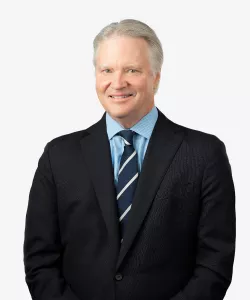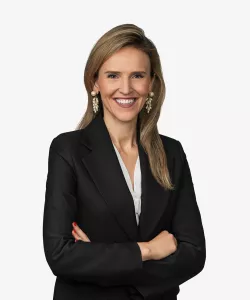Update: Federal Reserve Expands Scope and Eligibility of Main Street Lending Program
Effective October 30, 2020, the Federal Reserve updated its Term Sheets and Frequently Asked Questions (the “Updated FAQs”) describing the Main Street Lending Program (the “Program”) to expand the number of businesses that may be eligible to borrow under the Program.
The Updated FAQs also redefine how businesses may apply for multiple loans under the Program and how they may exclude loans they have received under the Paycheck Protection Program (the “PPP”) from the calculations required for Program loan applications. The following is an updated version of previous Client Alerts released on April 12, 2020, May 8, 2020, and June 22, 2020, to highlight certain updates to the Program.
The Program now offers loans to a wider subset of hotel owners and operators, as the minimum loan size for the New Loan Facility and the Priority Loan Facility is now $100,000 (reduced from $250,000 (and cumulatively from 500,000)). A single borrower still may receive more than one loan under a single Program loan facility (drawing upon only one of the New Loan Facility, the Priority Loan Facility, and the Expanded Loan Facility), but such borrower may not receive more than one loan from the same lender with an initial principal amount of less than $250,000 within sixty days. Below are details on why the Program (as updated) could be attractive to hotel owners and operators and their lenders.
If you are interested in learning more about the details of the Program, including eligibility requirements and restrictions on New Loan Facility, Priority Loan Facility, and Expanded Loan Facility loans, click on this link.
1. Why Is the Program (as Updated) Beneficial for Hotel Owners and Operators?
As updated, the Program will offer more options to an even wider set of eligible hotel owners and operators. Smaller hotel owners and operators may be eligible to access loans through the Program because the minimum loan size for the New Loan Facility and the Priority Loan Facility under the Program was reduced to $100,000 (formerly $250,000). Moreover, while Eligible Borrowers under the Program (“Eligible Borrowers”) may only participate in one of the Program loan facilities, an Eligible Borrower may receive more than one loan under a single Program loan facility, provided that:
- the sum of loans under the New Loan Facility do not exceed $35 million, the sum of loans under the Priority Loan Facility do not exceed $50 million, and the sum of loans under the Expanded Loan Facility do not exceed $300 million; and
- the Eligible Borrower does not receive more than one loan from the same lender with an initial principal amount of less than $250,000 within sixty days.
The Federal Reserve implemented the new restriction described in (B) above to prevent lenders from originating multiple loans with an initial principal amount of less than $250,000 to the same Eligible Borrower in order to benefit from the new loan origination fee structure for the New Loan Facility and the Priority Loan Facility, which provides:
- If the initial principal amount of the loan is $250,000 or greater, the Eligible Borrower must pay the lender a fee of up to 100 basis points of the principal amount of the loan at the time of origination.
- If the initial principal amount of the loan is less than $250,000, the Eligible Borrower must pay the lender a fee of up to 200 basis points of the principal amount of the loan at the time of origination.
2. How May an Eligible Borrower Exclude PPP Debt From “Outstanding Debt” for Purposes of the Program?
The Updated FAQs reflect that an Eligible Borrower that has received a PPP loan may exclude such loan when computing “existing outstanding and undrawn available debt” in order to determine the maximum allowable loan amount it qualifies for under a Main Street loan facility. So long as the Eligible Borrower together with its affiliates (as defined for purposes of the PPP) received PPP loans with original principal amounts totaling less than $2 million, the Eligible Borrower may exclude such PPP loans. On the other hand, if such aggregated PPP loans had original principal amounts totaling $2 million or more, the Eligible Borrower may not exclude any of the outstanding portion of such loans except to the extent that the SBA has determined that such loans are eligible for forgiveness. Under such circumstances, the following may be excluded from the “existing outstanding and undrawn available debt” calculation:
- If the Eligible Borrower has applied for forgiveness of its PPP loan, the “Forgiveness Amount” as reported by the Eligible Borrower on the SBA loan forgiveness application form may be excluded, except to the extent the Eligible Borrower’s PPP lender or the SBA has determined that such amount is ineligible for forgiveness.
- If the Eligible Borrower has not yet applied for forgiveness of its PPP loan, the amount of its PPP loan that its principal executive officer has a reasonable, good-faith basis to believe will be forgiven pursuant to applicable PPP requirements, after review of the SBA loan forgiveness application form, may be excluded.
The Federal Reserve reportedly provided this framework in order to support lending to PPP borrowers that are otherwise eligible to borrow under the Program but that may not receive the SBA’s PPP loan forgiveness decisions by the time of applying for their Program loans. So, if an eligible hotel owner or operator already has received PPP loans and has applied or is in the process of applying for forgiveness of such loans, they may be able to exclude such loans from their “outstanding debt” calculation in order to increase their maximum allowable loan amount under the Program. Note, however, that unlike PPP loans, Program loans are not eligible for loan forgiveness
3. What Are the Differences (as Updated) Between the New Loan Facility, the Priority Loan Facility, and the Expanded Loan Facility?
| Loan Options | New Loan Facility (MSNLF) |
Priority Loan Facility (MSPLF) | Expanded Loan Facility (MSELF) |
|---|---|---|---|
| Type | New Loan | New Loan | Upsized Tranches of Existing Loans with remaining term of at least 18 months |
| Term | 5 years | 5 years | 5 years |
| Minimum Loan Size | $100,000 | $100,000 | $10M |
| Maximum Loan Size | Lesser of: (a) $35M, and (b) amount when added to existing outstanding undrawn available debt is not greater than 4x 2019 adjusted EBITDA |
Lesser of (a) $50M, and (b) amount when added to existing outstanding undrawn available debt is not greater than 6x 2019 adjusted EBITDA |
Lesser of (a) $300M, and (b) amount when added to existing outstanding undrawn available debt is not greater than 6x 2019 adjusted EBITDA |
| Risk Retention | 5% | 15% | 5% |
| Principal Amortization* | Years 3–5: 15%, 15%, 70% balloon payment | Years 3–5: 15%, 15%, 70% balloon payment | Years 3–5: 15%, 15%, 70% balloon payment |
| Origination Date | After April 24, 2020 | After April 24, 2020 | Upsized Tranche: after April 24, 2020 Underlying Loan: on or before April 24, 2020 |
| Rate | LIBOR + 3% | LIBOR + 3% | LIBOR + 3% |
| Debt Priority | May not include any provisions that would cause the loan to be contractually subordinated to other debt in or outside of bankruptcy. | May not include any provisions that would cause the loan to be contractually subordinated to other debt in or outside of bankruptcy. Must include a standard lien covenant or negative pledge that is of the type and that contains the exceptions, limitations, carve-outs, baskets, materiality thresholds, and qualifiers that are consistent with those used by the Eligible Lender in its ordinary course lending to similarly situated borrowers.* |
May not include any provisions that would cause the loan to be contractually subordinated to other debt in or outside of bankruptcy. Any collateral securing the Existing Loan must secure the MSELF Upsized Tranche on a pari passu basis. Must include a standard lien covenant or negative pledge that is of the type and that contains the exceptions, limitations, carve-outs, baskets, materiality thresholds, and qualifiers that are consistent with those used by the Eligible Lender in its ordinary course lending to similarly situated borrowers.*+ |
| Borrower Certifications and Covenants Material Breach Mandatory Prepayment | Must include a Borrower Certifications and Covenants material breach mandatory prepayment provision.* | Must include a Borrower Certifications and Covenants material breach mandatory prepayment provision.* | Must include a Borrower Certifications and Covenants material breach mandatory prepayment provision.* |
*Appendix B to the Updated FAQs provides model provisions.
+ Where the underlying loan is part of a multi-lender facility, any lien covenant or negative pledge that was negotiated in good faith prior to April 24, 2020, as part of the underlying loan shall be deemed sufficient.
4. How to Apply for the Program?
The Program is now open for borrower registration. The Federal Reserve advises on its MSLP Policy Tools webpage that businesses can apply for Program loans by contacting an eligible lender. It may be helpful for hotel owners and operators to gather supporting documentation and consider contacting possible lending relationships to advance discussions in connection with a possible financing under the Program. A listing of registered lenders who are accepting new customers and have elected to be listed, along with other information for Eligible Borrowers, can be found on the Federal Reserve Bank of Boston Information for Borrowers website.
Contacts
- Related Industries
- Related Practices


